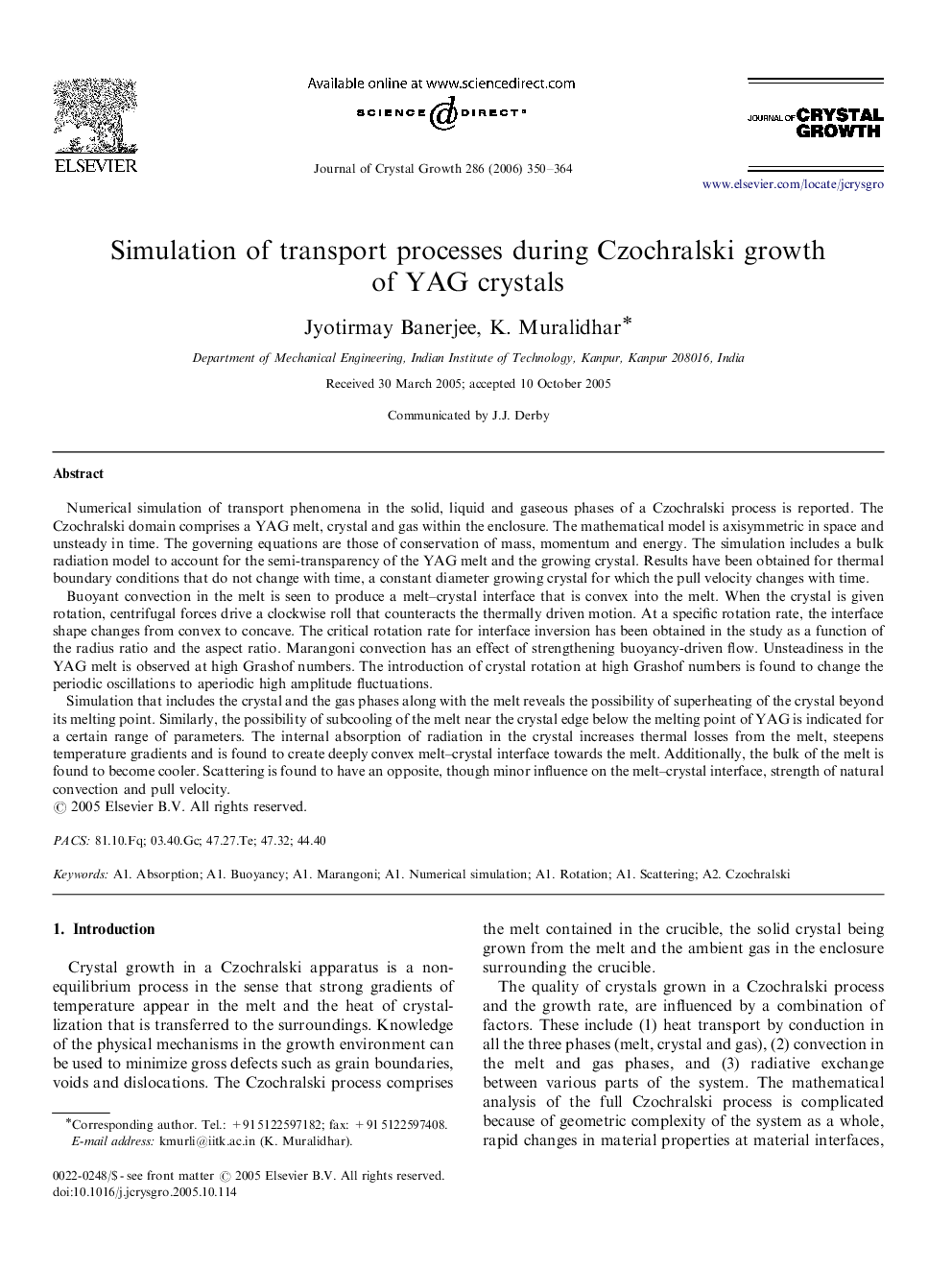| کد مقاله | کد نشریه | سال انتشار | مقاله انگلیسی | نسخه تمام متن |
|---|---|---|---|---|
| 1797034 | 1023761 | 2006 | 15 صفحه PDF | دانلود رایگان |

Numerical simulation of transport phenomena in the solid, liquid and gaseous phases of a Czochralski process is reported. The Czochralski domain comprises a YAG melt, crystal and gas within the enclosure. The mathematical model is axisymmetric in space and unsteady in time. The governing equations are those of conservation of mass, momentum and energy. The simulation includes a bulk radiation model to account for the semi-transparency of the YAG melt and the growing crystal. Results have been obtained for thermal boundary conditions that do not change with time, a constant diameter growing crystal for which the pull velocity changes with time.Buoyant convection in the melt is seen to produce a melt–crystal interface that is convex into the melt. When the crystal is given rotation, centrifugal forces drive a clockwise roll that counteracts the thermally driven motion. At a specific rotation rate, the interface shape changes from convex to concave. The critical rotation rate for interface inversion has been obtained in the study as a function of the radius ratio and the aspect ratio. Marangoni convection has an effect of strengthening buoyancy-driven flow. Unsteadiness in the YAG melt is observed at high Grashof numbers. The introduction of crystal rotation at high Grashof numbers is found to change the periodic oscillations to aperiodic high amplitude fluctuations.Simulation that includes the crystal and the gas phases along with the melt reveals the possibility of superheating of the crystal beyond its melting point. Similarly, the possibility of subcooling of the melt near the crystal edge below the melting point of YAG is indicated for a certain range of parameters. The internal absorption of radiation in the crystal increases thermal losses from the melt, steepens temperature gradients and is found to create deeply convex melt–crystal interface towards the melt. Additionally, the bulk of the melt is found to become cooler. Scattering is found to have an opposite, though minor influence on the melt–crystal interface, strength of natural convection and pull velocity.
Journal: Journal of Crystal Growth - Volume 286, Issue 2, 15 January 2006, Pages 350–364